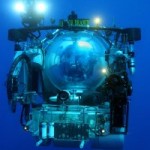What do they all have in common? Deep-sea coral microbial ecology. Coral microbial ecology is the study of the relationship of coral-associated microorganisms to each other, the coral host, and to their environment. Just as we humans have beneficial bacteria living on our skin and in our intestines, corals also have co-habitating, non-pathogenic microbes (and yes, I AM shooting for the most hyphens ever used in a DSN post*). These microbes include bacteria, archaea, and fungi–representing all three of the major domains of life (eubacteria, archaea, and eukaryotes).
What can we learn from studying deep-sea coral microbial ecology? Why is it important?

Microbes are recognized to be an important part of the total biology of shallow-water corals. Deep-sea corals have a fundamentally different ecology due to their adaptation to cold, dark, high-pressure environments, and as such have novel microbiota. These coral-associated microorganisms are found in the snot (more technically known as the SML, ‘surface mucus layer’), tissue, and skeleton of corals. It has been speculated that coral-associated bacteria benefit the coral by fixing nitrogen, breaking down waste products, and helping to cycle basic nutrients. Bacteria may also ward off other potentially harmful microbes by producing antibiotics or by just occupying the available space [“No room at the inn, buddy, go infect somebody else!”]
I have been isolating and describing the microbial associates of Lophelia pertusa in the Gulf of Mexico, and several gorgonian species from the Aleutian Islands. These are the first studies to include both culture-based and molecular data on deep-sea coral-associated bacterial communities. I was fortunate enough to have the use of the Delta submersible in the Aleutians and HBOI’s Johnson-Sea-Link in the Gulf. The sub-crews were very accommodating of my personally designed gear, which allowed me to collect the coral samples in individual insulated containers and to add preservative to the samples at depth in an effort to maintain in situ microbial diversity by minimizing contamination and thermal shock.
Sequencing of the 16S rDNA genes from the cultured bacteria and the directly extracted bacterial community DNA was used to identify and characterize the coral-associated bacteria. In general both the gorgonians and Lophelia had many novel bacteria. Lophelia has many bacteria and bacterial sequences that are similar to symbionts of fish, squid, and methane-seep clams. In particular, there is one sequence present in all Gulf of Mexico Lophelia colonies I’ve analyzed to date (n=6), which is related to a sulfide-oxidizing gill symbiont of a seep clam. This microbe may be a Lophelia-specific bacterium and provides an interesting linkage between the coral and cold seep communities. It was hypothesized previously that the reason Lophelia is often found near hydrocarbon seeps is that bacteria feeding on the hydrocarbons are passing nutrients on to the coral. However, stable isotope work has failed to find any hydrocarbon signatures in Lophelia, showing that the carbon is not moving from the methane to the coral. This seep-clam-symbiont-like bacterium may be a new clue to help unravel the connection (if there is one) between Lophelia and seeps.
*(22, is that a record?)
Image credits: Lophelia pictures, CK






Fascinating research – thank you for sharing.
Do these microbes gain anything from living on the coral (ie does the coral give anything in return)?
People are still trying to determine exactly what the microbes get out of living on corals (both shallow and deep varieties) and vice versa. One obvious thing is a surface to live on–some bugs like to grow on surfaces rather than free-floating and coral mucus is a glorified prefab biofilm. Also, because of the viscous nature of the mucus, exoenzymes and quorum-sensing molecules the bacteria produce aren’t immediately diluted away–this would facilitate some biogeochemical cycling and ‘talking’ to each other. It’s also likely the microbes are acquiring food from the coral–both directly (metabolites, mucus components), and maybe stuff floating by that gets caught in the mucus.